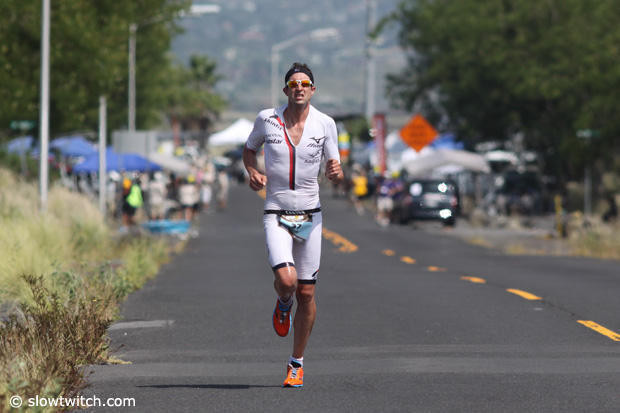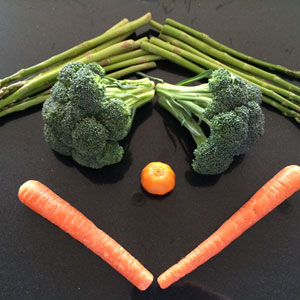Solar Radiation on Performance
Solar radiation contributes to heat stress and increases exercise fatigue, regardless of temperature or humidity, according to a study published in the European Journal of Applied Physiology.
While it’s common knowledge that hot temperatures and high humidity contribute to tough racing conditions (i.e. Ironman Lanzarote, Ironman Hawaii, etc.), this study concludes it’s more than just the heat that affects performance. Additionally, it highlights the need to address increases in skin temperatures as well as core temperatures. Despite increased skin temperatures due to solar radiation, subjects’ core temperatures, sweat loss, heart rate and blood flow remained unchanged.
The results should serve as a reminder of the need to prepare adequately for a race in a sunny climate, which includes taking steps to mitigate the effects of sun exposure, such as wearing light-colored clothing and arm coolers, as well as training in warm, sunny environments before the race.

The Study
Researchers recruited eight healthy, male volunteers in their early 20s to complete four exercise sessions on stationary bikes, at varying levels of solar radiation. During all four tests, temperature and humidity remained constant, while solar radiation — produced by halide lamps to that mimic the sun — varied between trials at 800 W/m2, 500 W/m2, 250 W/m2, and 0 W/m2. (For reference, in Kona, Hawaii, the site of the Ironman World Championships, solar radiation tops out at about 650 W/m2 midday in October. Light cloud cover reduces radiation to about 500W/m2, and thick clouds reduce radiation to about 250W/m2.)
The volunteers pedaled on the stationary bikes at an intensity of 70 percent of VO2-max until exhaustion. As the researchers expected, solar radiation was inversely related to time-to-exhaustion, meaning as solar radiation increased, it took less time to exhaust the volunteers. Note that the researchers separated each trial by a week and did not allow the volunteers to exercise or drink alcohol during the 24-hour period preceding the trials, in order to keep everyone “fresh.”
Subjected to the highest amounts of radiation, volunteers stopped pedaling at about 25 minutes. At 500 W/m2, 250 W/m2, and 0 W/m2, volunteers capped out at about 30 minutes, 43 minutes and 45 minutes, respectively.
Researchers also measured and found no difference in core temperature, total sweat loss, heart rate, skin blood flow, cutaneous vascular conductance and percentage changes in plasma volume among the four trials. Other than time-to-exhaustion, the only variables that changed significantly were surface skin temperature, which increased along with solar radiation, and core-to-skin temperature gradient, which decreased as solar radiation increased. Previous studies have linked both increases in surface skin temperature and decreases in core-to-skin temperature gradient with reductions in exercise performance (Cuddy et al. 2014; Sawka et al. 2012), and the researchers hypothesized that these physiological changes ultimately led to the reduced performance times in the eight volunteers.
The Supporting Evidence
Other studies (Blazejczyk 1998; Hodder et al. 2007) have demonstrated that solar radiation is linked to increases in skin temperature. In fact, Blazejczyk concluded that as much as 50 percent of variations in skin temperature is due to solar radiation. Given that hot skin temperature is highly correlated with reduced exercise performance (Sawka et al., 2012), it makes sense that solar radiation could be linked with increased fatigue.
Beyond performance, solar radiation can induce other physiological damages, including skin cancer and reduced immune system strength (World Health Organization, 1999). Damage to DNA caused by solar radiation is stronger in the summer months and more pronounced in older people. Also, the ability to recover from this DNA damage is reduced with age (Tsilimigaki et al. 2002).
What to do about it
● Dress appropriately: Arm coolers have become popular recently among the pros at the Ironman World Championships and other similarly hot races, and there is supporting evidence to show they work. In a 30-minute run trial conducted in the Natural Energy Lab — an infamously hot stretch of the marathon course in Kona — arm coolers were shown to reduce skin temperature by 1.7°C (3.0°F) compared to open exposure. Given that reductions in exercise performance caused by solar radiation are largely due to increases in skin temperature, it appears arm coolers are an effective method to mitigate this effect. Other options include a hat, visor, sunglasses and light-colored, UV-resistant clothing, along with cooling with water and ice.
● Train for the heat: In the solar radiation study, researchers noted that the eight subjects were “healthy and active” but not heat-adapted. They concluded that solar radiation would likely reduce exercise performance in trained endurance athletes, but that these effects would be lower. This is only a hypothesis, but it emphasizes the need to train in the heat to race well in the heat, especially given the other physiological changes that occur, such as increased blood flow to the skin and increased sweat rates, which improve performance in the heat.
What probably won’t help
● Sunscreen: Two notable studies have examined the relationship between sunscreen and exercise performance. Unfortunately, they’ve come to conflicting conclusions. A 1994 study found sunscreen reduces skin temperature, but it did not measure changes in exercise performance. A more-recent study presented in 2000 at the Australian Institute of Sport found no difference in performance between subjects that applied sunscreen and subjects that did not. While it’s still very important for endurance athletes to apply sunscreen during exercise to protect against skin cancer (especially given that Moehrle (2001) found triathletes “considerably exceed” the limits of suggested UVA exposure compared to other outdoor activities), it is unlikely to boost performance due to a reduction in solar radiation.
● Training at altitude: As you travel away from sea level, the thinning air reduces the protection from solar radiation. Because of this, some researchers have hypothesized that training at altitude can help the body become more resilient to the effects. However, the consensus is that most of the benefits from altitude training come from adaptation to reduced oxygen intake — not increased solar radiation.
Conclusion
How does the triathlete community benefit from this new study? It’s not groundbreaking to learn that hot, sunny environments negatively affect performance. However, until this study, there was no quantitative analysis that indicated a strong link between solar radiation and performance.
When faced with racing conditions that are identical in heat and humidity, but different in sun exposure (think cloudy vs. sunny), a triathlete should take extra precaution in direct sunlight. That triathlete may also want to consider investing in long-sleeved, light-colored clothing or arm coolers to further mitigate the effects of solar radiation.
Jonathan Toker is a Canadian elite-level runner and triathlete. He received a Ph.D. in organic chemistry from The Scripps Research Institute in 2001, and raced in the professional ranks as a triathlete for 5 years and now mostly runs on trails. Dr. Toker worked as a scientist in the biotech industry for 5 years prior to launching his unique SaltStick Electrolyte Capsule and Dispenser lineup.





Start the discussion at forum.slowtwitch.com